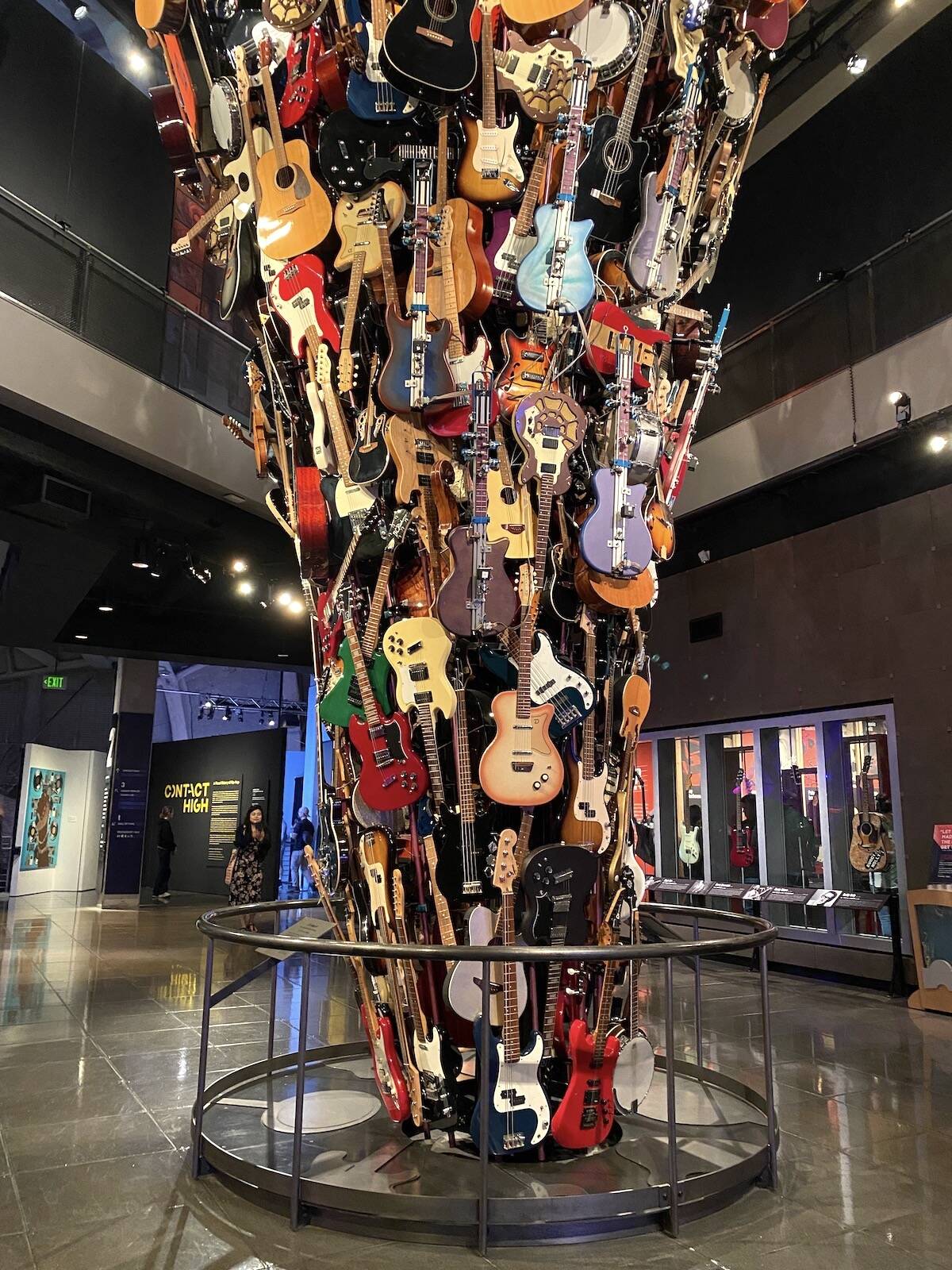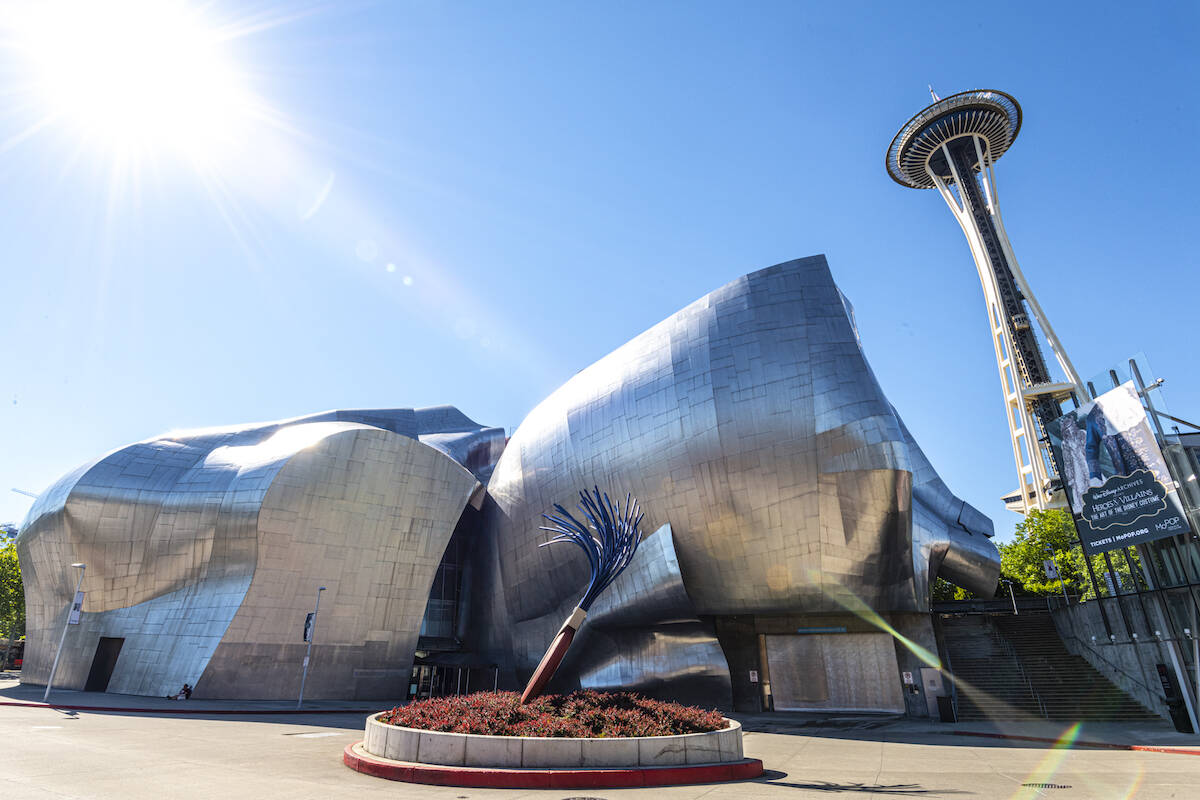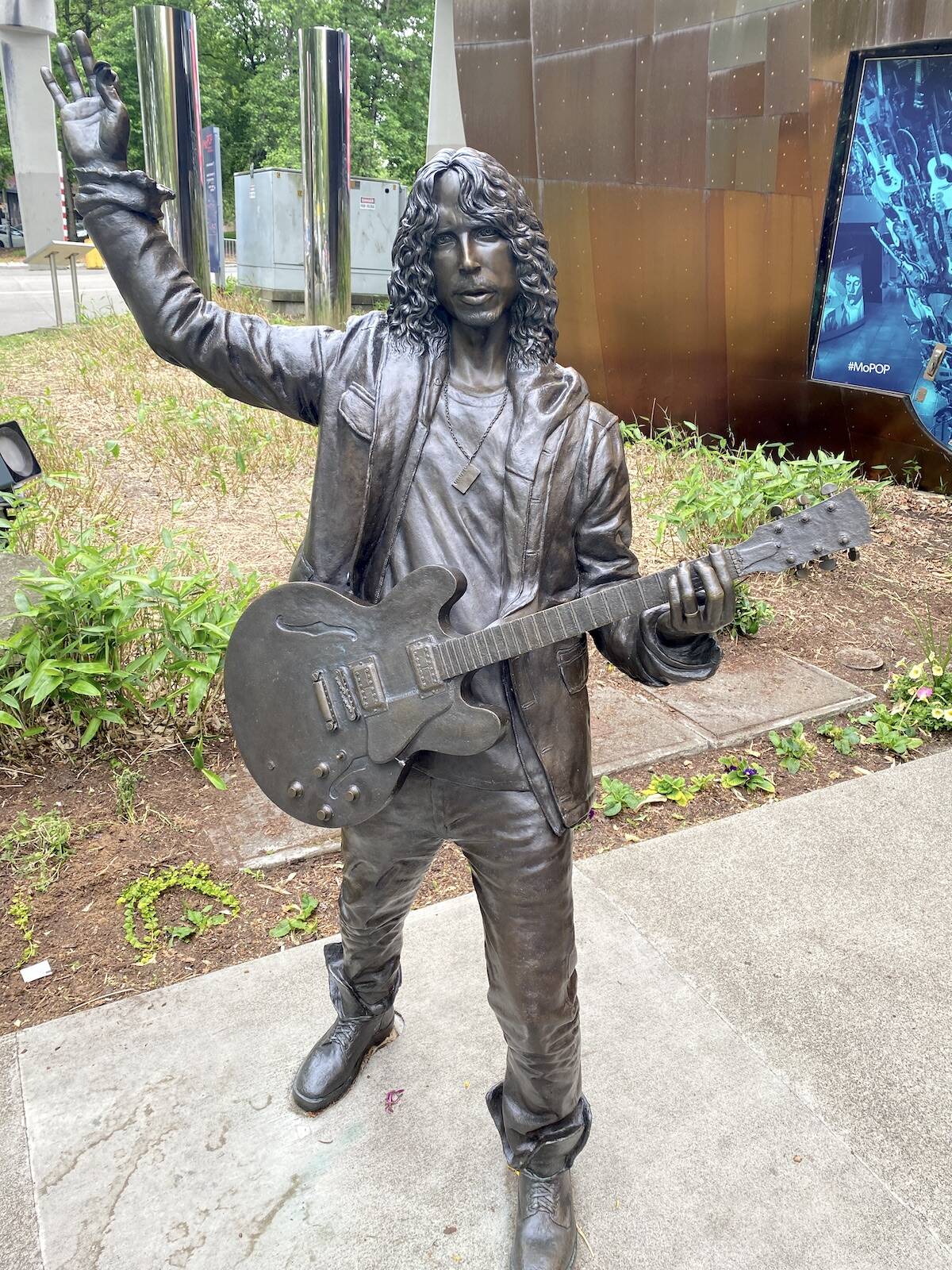Seattle’s Museum of Pop Culture isn’t as focused on music these days, but it’s still a rock ‘n’ roll experience inside that blob-like, Frank O. Gehry-designed metallic building.
Branded with the clever name MoPOP since 2016, the museum stands in the shadow of the Space Needle where it first opened in 2000 as Experience Music Project, or EMP.
Out of the gate it was all about music, and nothing but, and now the museum has grown to embrace the cultures of sci-fi, fantasy and horror movies in recent years, including a new “Hidden Worlds” exhibit that features “Coraline” and other stop-motion films of Oregon’s Laika studio.
Exhibits tracing the histories of two of Seattle’s biggest musical exports, Nirvana and Jimi Hendrix, are long-term MoPOP exhibitions. Both offer fascinating deep dives into the lyrics, photos and memories of the trailblazing Grunge- and Hippie-era artists.
Another highlight is the Guitar Gallery of stringed instruments played by famous rockers including Slash, Stevie Ray Vaughan and Alice in Chain’s Jerry Cantrell.
Feeling inspired by all those axes? Try jamming with others in the Sound Lab, home to electric guitars, basses, drums, keyboards, microphones and other ready-to-rock gear in a studio-like setting.
At the moment, the most compelling exhibit at MoPOP is “Contact High,” a visual history of hip-hop music that includes contact sheets, large-format photos and the stories of some of the most celebrated photo shoots of the past 40-plus years. Featured are influential artists including Missy Elliott, Jay-Z, Queen Latifah, Tupac and others. Hurry to see “Contact High” because it’s scheduled to leave the museum in January 2024.
On the venue website mopop.org, look for news about two other music-related exhibitions coming next year, including one planned as a long-term showcase.
In the lobby, the museum’s iconic “guitar tree” still stands in the MoPOP lobby. It’s actually called “IF VI WAS IX: The Roots and Branches Sculpture,” created by artist/composer Trimpin with close to 700 musical instruments (mostly guitars). The sculpture didn’t play any music when we visited in May, but word is that restoration work will make the music happen again one day.
New to me was the bronze statue of Soundgarden’s Chris Cornell on a sidewalk outside MoPOP. Nick Marra’s wonderful sculpture of the Seattle-raised son was commissioned and donated by Vicky Cornell five years ago, in 2018. It’s worth a selfie, for sure.
Sadly, we just missed the “Pearl Jam: Home And Away” exhibit that closed at MoPOP in April after five years of showcasing the Seattle band.
If music isn’t your thing, check out the museum’s other exhibits including the chilling “Scared To Death: The Thrill of Horror Film,” “Indie Game Revolution” and “Fantasy: Worlds of Myth and Magic,” which is home to weaponry from “The Lord of the Rings,” the first white walker head from “Game of Thrones” and other attractions.
Ultimately, the most fascinating aspect of MoPOP might be the building itself. Close to 3,000 panels encase the outside of the structure with a fusion of textures and myriad colors. When Gehry began designing the museum, he was apparently inspired to create a structure that evoked the rock ‘n’ roll experience. As the story goes, he purchased several electric guitars, sliced them into pieces and used them as building blocks for an early model design.
That’s actually pretty rock ‘n’ roll, right?
tom.zillich@surreynowleader.com
Like us on Facebook Follow us on Instagram and follow Tom on Twitter



